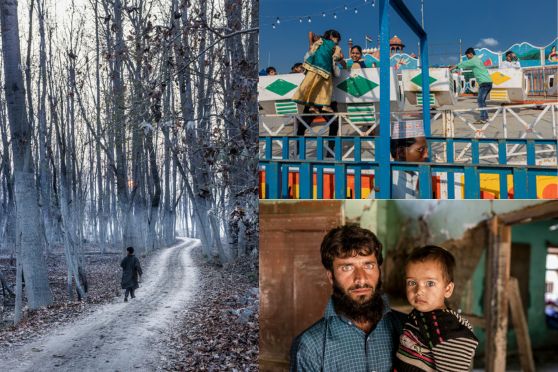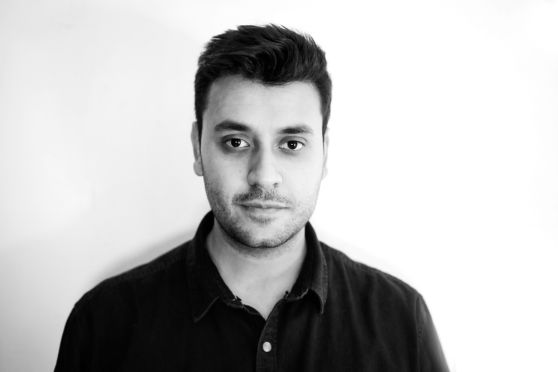World Photography Day 2024| Take out your camera and start exploring- Meet Siddharth Behl, National Geographic Explorer


‘A picture is worth a thousand words’- Celebrating World Photography Day on 19 August 2024, recognises the power of photography in shaping culture, preserving history, and expressing creativity. From its humble beginnings in the early 19th century to its omnipresence in the digital age, photography has evolved into a powerful medium that connects people across the world.
Origin of World Photography Day
The origins of World Photography Day date back to 1839 when the French government announced the invention of the Daguerreotype, the first practical photographic process developed by Louis Daguerre. The French government purchased the patent for this invention and offered it as a free gift to the world, marking a significant moment in the history of photography.
Paying a global tribute to the art of photography, The Telegraph Online Edugraph was in conversation with Siddharth Behl, a distinguished photojournalist and National Geographic Explorer, whose work has taken him to some of the most remote and challenging environments on Earth. Behl, at age 22, became the youngest photographer to cover climate induced social stories and disasters across India. His works are predominantly based on social documentaries driven by climate change, migration, refugees, historical findings, intimate portraits and varied architectures.
1. You're known to be the youngest photographer to cover climate induced social stories and disasters across India. If you could share your journey with us and what inspired you to be where you are today?
I was 22 when I came out of college masters and had to begin a professional career. I decided to work for an NGO where I was given a huge opportunity and responsibility to discover my niche in capturing climate induced disasters. With graphic designing and writing stories comprehending my photography, my interest and expertise grew in the last couple of years where I dedicatedly worked across various post disaster scenarios like Uttarakhand flash floods, Kashmir floods, Nepal earthquake, Maharashtra droughts, Odisha cyclone, Kerala floods and recurring capital floods.

This was the time I realised that developing human stories who were affected by the aftermath of climate induced disasters and oblivious to the media and world would be an interesting area of visual development and creative photography. After 10 years of my starting point, I still continue to learn but all these experiences and discipline in maintaining this momentum in this field, inspired me to travel across India and neighbouring countries with my camera to gauge and nurture my craft as a photographer.
2. What does photography mean to you? Have you always thought of pursuing photojournalism?
Photography for me is a memory of my lifetime. What all I have captured, what all I’m seeing, feeling, constantly approaching and most importantly the time which is passing by preserving this emotional data… either digital or analogue is photography for me. Surprisingly I still remember the time, hour and feeling of almost all the images which I have captured so far.
I learnt photography a little differently I would say! From thoughts of becoming an architect, then military, and then switching my career to journalism was a slight surprise in my career. Photography was never known to me until a college module in photography caught my interest. And one Diwali night my father handed over a 10 MP Kodak digital camera as a gift since he saw me struggling with a film camera… he never thought I’d take that piece of instrument seriously as a part of my career!! That camera was my learning curve where I literally experimented with everything. From street, to still life, wildlife, fashion, architecture, portraits, fine art, night long exposures… there was nothing that wasn’t experimented, eventually prospering my interest in documentary projects and journalism.

4. Compared to a career in other industries, how would you describe a career in photography? What, according to you, are the most important skills required to be successful in this industry?
I personally think, comparing other professions with Photography would be a little unfair. Every profession has its own challenges, has its own certainties and uncertainties, and is carried forth by the interest of people with different mindset and approach. As long as you are focused about your chosen genre, line, professional approach and path, photography can definitely be a great source of income, either being a freelancer or full time paid job. Just like other job profiles, photography also has its pros and cons, but in the end, what really matters is how you manage to make money through your art and communications.
To become a successful photographer, or atleast an efficient photographer in your own terms, it is really important to keep up with your industry standards and know what is happening around you and know your potential clients who look up to your kind of work. Social stories, politics, geo politics, travel, culture, news, etc, all these diversified nuances need access and strong communications to key people who run this industry business. Parallelly working on different personal stories, writing for grants, connecting with national international clientele, taking lectures, participating in exhibitions, collaborative opportunities are the key components one should never stop applying for. But many top companies for whom we have employed have all started the same way. For a photographer to survive in this industry, it takes discipline and continuity to purpose and approach your own methods seriously.
5. Can you tell us about the trending career options in this sector? Also, if you can tell us about your projects with National Geographic Explorer.
Photography industry evolves as one tends to grow and think differently, approaching multiple ways of earning and finding scopes of work through various channels. With a lot of influencer trends these days, photography and videography has taken a new leap in the visual industry, where there are infinite options to play around with. But surely not limited to content creation. Documentary and journalism is always hungry for evidence and having creative photography play its role is really substantial. And as we all are experiencing changing infrastructure, trends, culture around us, having a good commercial portfolio is also a great option to indulge in simultaneously.
Local and established businesses need to keep up their standards in the market to compete and having a visual enhancer (basically a photographer) on board can really change the game. For any photographer, their genre of interest is crucial, then finding a potential mode of making money for survival is the primary challenge.
My current project with the National Geographic Explorer program is an elongated climate project where I get to cover climate induced disasters. The photo project unfolds fascinatingly as it establishes traces of the tribal Ladakhi culture, their history and untold stories from far off lands where there is still no connectivity in a prime wilderness high altitude landscape set up.

7. Any piece of advice or insights you would like to pass on to youth aspiring to be a part of this industry?
If you really want to be a photographer, I would really like to pass on straight advice, which I got as a student, which is leave your phone in your pocket or in your bag. Take out your camera and start exploring the things around in the fascinating world that interest you. Save money to travel in your own country. Try not being hooked up to your mobile phones and building only insta content popularity, instead understand varying landscapes, people, food, cultures that lie ahead of you.
As we celebrate this day, I am reminded of a song, called Photograph by Ed Sheeran-
We keep this love in a photograph
We made these memories for ourselves
Where our eyes are never closin'
Hearts are never broken
And time's forever frozen still..
So let’s capture moments and make timeless memories as we go along?